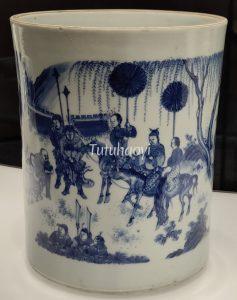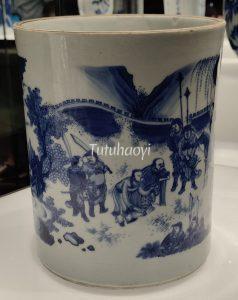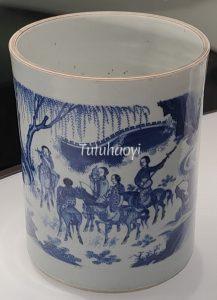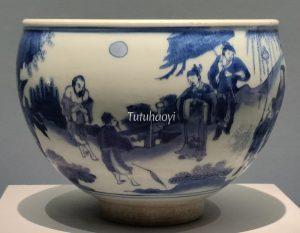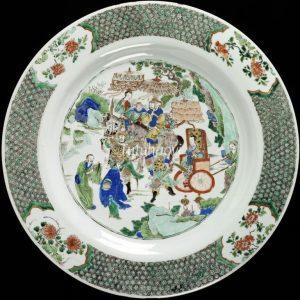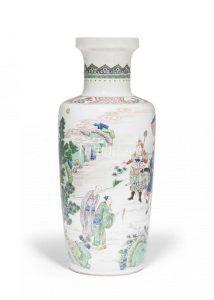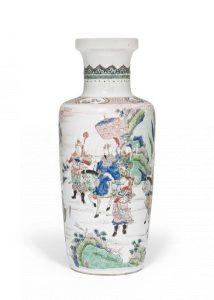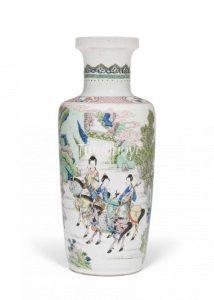Enlightenment during a Spring Outing
郊游点化
© Tutuhaoyi.com owns the copyright of the description content for the images attached. Quoting all or part of the description content on this page is permitted ONLY IF ‘Tutuhaoyi.com’ is clearly acknowledged anywhere your quote is produced unless stated otherwise. (本页描述内容版权归Tutuhaoyi.com所有,转发或引用需注明 “Tutuhaoyi.com”, 侵权必究, 已注开源信息的条目除外。)
Legend of the Epiphyllum (Tanhua Ji 昙花记) is a late Ming dynasty drama written by the accomplished scholar Tu Long (屠隆, 1542–1605), composed during the Wanli reign. Renowned for his achievements in literature, art, and Buddhist philosophy, Tu Long described this legendary play as a work intended ‘to expound the laws of karmic retribution and express Buddhist truths’.
The protagonist is the fictional Tang dynasty general Mu Qingtai 木清泰, whose journey from worldly glory to spiritual cultivation and ultimate enlightenment forms the core of the narrative. The title, Legend of the Epiphyllum, symbolises the transient nature of wealth and fame, echoing the Buddhist notion of impermanence and the teaching that ‘form is emptiness’.
The most celebrated scene, Enlightenment during a Spring Outing, depicts Mu Qingtai enjoying a joyful spring excursion, accompanied by his wife, concubines, attendants, music, and wine. Along the way, his procession is halted by two eccentric figures: the drunken monk Pindola 宾头卢 and the mad Daoist Shan Xuanqing 山玄卿. These two, emissaries of the Buddha and the Daoist Patriarch respectively, challenge Mu with poetic exhortations, urging him to awaken from his worldly delusions. Initially proud of his military success and noble rank, Mu is struck by Pindola’s reminder: ‘Though clad in a purple robe, your hair still turns white.’
This moment of realisation prompts Mu to renounce his official post and family ties, setting out on a path of spiritual cultivation. Before departing, he plants a rootless epiphyllum flower in his courtyard. Over a decade later, the flower blooms, heralding his family’s collective enlightenment and their ascension to the Pure Land.
This richly symbolic and visually dynamic scene, drawn from Act Five of the play, became a popular motif in porcelain decoration during the late Ming and early Qing periods.
story scene description by Rachel Ma
Similar Figural Story Scenes for Differentiation:
Bo Yi and Shu Qi Trying to Stop the Mighty Zhou Army 伯夷、叔齐叩马谏周王
Fig 1-3: porcelain brush pot with underglaze blue decoration, Chongzhen period (1628–44), Ming dynasty, courtesy of the Shanghai Museum, China; Photographs by Rachel Ma
Fig 4: porcelain bowl with underglaze blue decoration, Chongzhen period (1628–44), Ming dynasty, courtesy of the National Museum of China, Beijing, China; Photograph by Rachel Ma
Fig 5: famille verte porcelain dish, Kangxi period (1662–1722), Qing dynasty, courtesy of the Victoria & Albert Museum, London
Fig 6-8: famille verte rouleau vase, Kangxi period (1662–1722), Qing dynasty, courtesy of Musee de Arts Decoratifs, Paris
